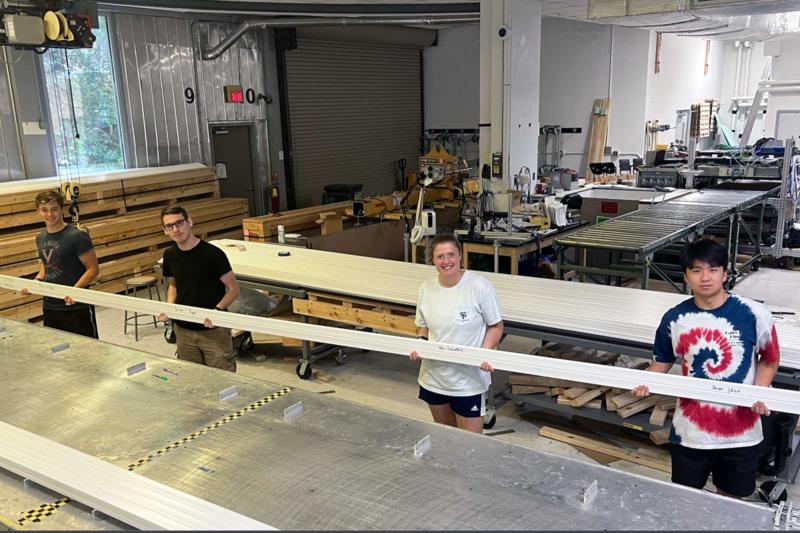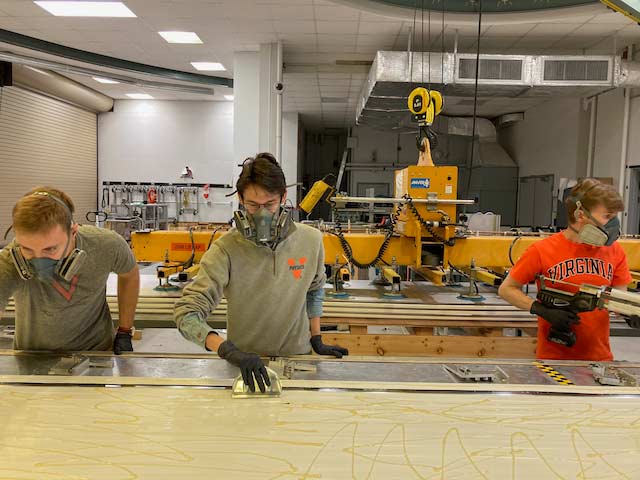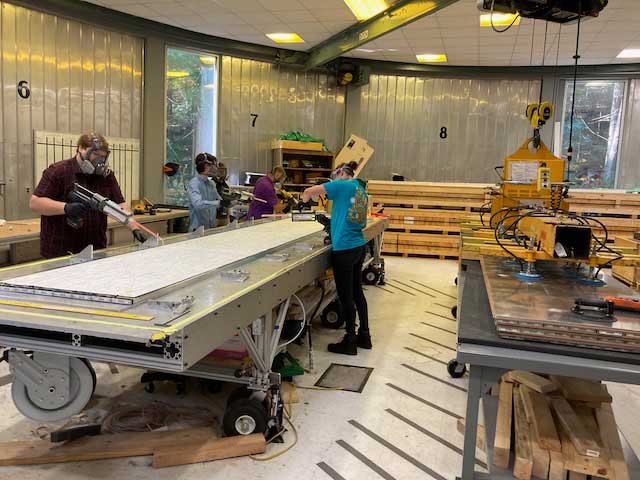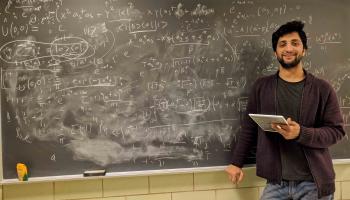What the Heck is a ‘Cosmic Ray Veto Detector’?

University of Virginia physicists and the research organization Fermilab are assembling the final pieces of a “cosmic ray veto detector,” which will help them spy on subatomic particles called muons as they decay into electrons.
It may sound like science fiction, but it’s not. It’s all science. And human beings may end up better understanding the universe as a result.
UVA shipped its last truckload of five large, specialized panels March 1, bound for the Chicago-area research facility. Formally known as the Fermi National Accelerator Laboratory, the lab is run by the U.S. Department of Energy.
The panels that comprise the detector will form the shell of the high-profile international experiment, called “Mu2e” – so named for the muon-to-electron conversion scientists hope to record.
“In just a few years, Mu2e could provide a major discovery for physicists,” said Craig Group, an associate professor in the Department of Physics' Experimental High Energy Physics unit. “UVA takes great pride in being responsible for a major piece of the experiment.”

Students took an overabundance of caution as they prepared the CRV components. (UVA Experimental High Energy Physics photo)
You may never have heard of muons, but they’re among the handful of fundamental building blocks of the universe. They’re constantly entering our planet from outer space.
Yet like Clark Kent changing into Superman, the special muon-to-electron-only conversions (different than ones that decay to produce another particle, the neutrino) haven't been observed. And the conversion is believed to be about as rare as the phone booth Superman changes in.
Given the limited window of opportunity, researchers want to make sure everything goes right.
Cosmic Ray Bans
Since cosmic rays can penetrate anything, Fermilab wants to ensure that when the rays do inevitably wander in, they won’t skew Mu2e’s results.
Experimental High Energy Physics professor E. Craig Dukes, along with Group, came up with the detector’s ingenious design. The detector is made of special counters that emit light when cosmic rays enter. Optical fibers within the counters change the light's wavelength and transmit the pulses to photo sensors at the fiber ends. The sensors convert the light into electrical signals that get digitized.

Students prep a CRV module. There are 32 di-counters per module. UVA produced about 2,500 di-counters over five years. (UVA Experimental High Energy Physics photo)
“When one of those cosmic rays comes in from the atmosphere, we can detect it and veto a little time window in the experiment,” Group said.
For the past four years, he has overseen the fabrication of the detector by technicians and numerous UVA students. Although three special, smaller one-off modules will be built this summer, the bulk configuration is now complete.
The overall veto system is huge. It’s comprised of more than 80 of the modules, each weighing around 2,000 pounds, with most panels about 20 feet long.
Yet it’s small compared to, say, the universe and all its secrets.
Universal Understanding
The “Standard Model” of particle physics does a pretty good job of explaining how things work in our world. However, it falls short in explaining certain phenomena that scientists have observed in the universe.
Striking variations in how the pull of gravity works on celestial bodies, for example, may be the result of suspected “dark matter” and “dark energy.” Scientists have incomplete information.
Currently, the muon-to-electron conversion is believed to be statistically unobservable based on the Standard Model. Should the conversion be observed at Mu2e, Group said, it would be a pathbreaking discovery.
“It would provide clues as to what theories need to be added in order to make the Standard Model more complete,” he said.
In the past, Fermilab has been responsible for a number of major particle research breakthroughs, including discovering top and bottom quarks.
For more about the Mu2e project, check out UVA Today’s detailed coverage, including a photo essay documenting how the panels were constructed.









